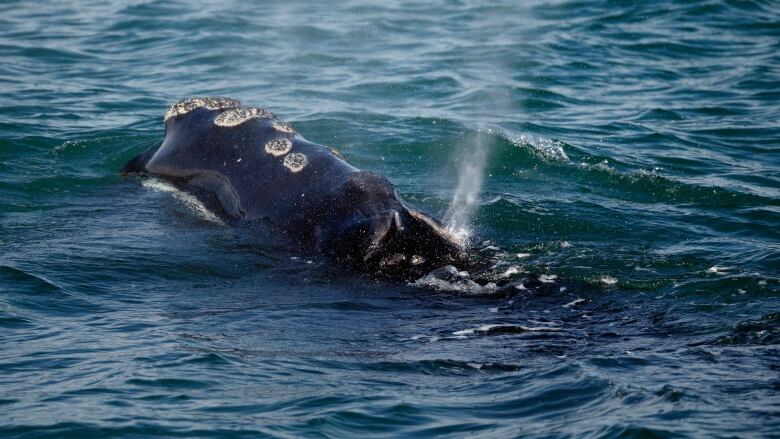New protective measures announced for North Atlantic right whales
6 deaths reported since early June, 3 whales entangled in the Gulf of St. Lawrence as of July 8

In a series called Deep Trouble, CBC News explores the perils facing the endangered North Atlantic right whale.
Transport Canada has announced further protective measuresin the Gulf of St. Lawrence for the North Atlantic right whale.
Themeasures, announced Monday evening, include further reducing ship speeds in the area, increasing zones in which the speed restrictions will apply, increasing aerial surveillance and funding for initiatives to enhance marine mammal response.
In 2019,there have been six whale deaths reported and on July 8, there were threeNorth Atlanticright whales entangled in the southern waters of the Gulf of St. Lawrence, according to Fisheries and Oceans Canada.
"Given the very unfortunate recent deaths of North Atlantic right whales in the Gulf of St. Lawrence, of which three deaths have been preliminarily attributed to vessel strikes, my department is implementing new measures to further protect North Atlantic right whales,"Transport Minister Marc Garneausaid in a news release.
The new measures take effect July 9.
More aerial coverage, speed limits
The increased surveillance means more planes in the sky, boosting coverage from twoflights a week to two a day, weather permitting.
This coverage will last until July 15 and results will be used to determine the plan for increased surveillance for the rest of the season, as well as any further measures required to protect the whales.
Transport Canada will also expand the current slowdown zonein shipping lanes north and south of Anticosti Island where vessels are required to slow to 10 knots, and further east when a North Atlantic right whale is spotted in that area.
A slowdown buffer zone will also be expandedfrom 2.5 nautical miles to five nautical miles to trigger speed restrictions if a North Atlantic right whale is spotted in that area.
The application of mandatory speed restrictions will be expanded to any vessel measuring more than 13metres long. Previously, it applied only to vessels 20 metres or longer.
Transport Canada will also divide the mandatory slowdown zone into northern and southern zones. This means that in the event of poor weather that creates dangerous conditions,the speed limit would be temporarily lifted but only in the affected zones and not the entire slowdown zone.
Funding for marine response
Adjusting the trigger for fisheries closure is another new measure taking effect July 9. If more than one North Atlantic right whale is observed anywhere in the Gulf of St. Lawrence, the area of the sighting will close for 15 days for non-tended fixed-gear fisheries.
The federal governmentwill invest $1.2 million this year as part of a $4.5-million commitment over four years to further enhance the marine mammal response program, which responds to marine mammals in distress. The funding is part of a $167.4-million whale initiative.
The government says it will also providenew funding to further advance protection of the North Atlantic right whale. As part of the $1.3-billion nature legacy initiative in the 2018 budget, the Canadian Nature Fund for Aquatic Species at Risk will provide $5 million over the next four years toward six projects to help safeguard the whales.
Finally, there will be funding for two additional projects under the habitat stewardship program to mitigate risks and support conservation.
Transport Canada also noted that because the whales cross international waters, it would be seeking to meet with its counterparts in the U.S. to look at implementing joint measures toaddressrisks facing the whales.












_(720p).jpg)


 OFFICIAL HD MUSIC VIDEO.jpg)
.jpg)



























































































